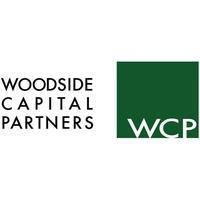The World of Quantum and Laser World of Photonics Shows
WCP Industry Events:
The World of Quantum and Laser World of Photonics Shows
When Worlds Collide
Photonics and Quantum are closely connected, so it's not surprising to see a trade show highlighting both. The World of Quantum and Laser World of Photonics took place at the end of June 2025 in Munich, Germany. Both sectors set new records for exhibitors, with nearly 1,400 on the Photonics side and over 150 on the Quantum side. Some companies had booths in both halls. Key focus areas included defense, medical, industrial, and security applications.
This show was a refreshing change. Despite its size, the layout was designed so that you could walk from one end to the other in ten minutes. Exhibitors were generally calm and focused—the chaos usually seen at most trade shows was missing. Anecdotally, the average attendee age was about half that of OFC. If this is an indication, we have a future. The spirit of hope was clear in a rapidly growing industry of great importance.
Exhibitors felt they were on the verge of something great, especially in quantum science. Most were relaxed and open to genuine conversations. This was a sharp contrast to many trade shows, where you would often hear, “You can view our latest product in our booth, but first let me scan your badge.” There were no hawkers or placard-waving promoters. The check-in process was quick and smooth. Despite the show's larger size, the aisles were wide, and exhibits were spaced far enough apart to prevent claustrophobia. The convention complex, Messe München, is enormous, with ten large exhibition halls in use. It was arranged in a way that was easy to navigate, allowing plenty of “breathing room” for exhibitors and attendees.
There were clear country-specific clusters of emerging companies. With a home-court advantage, German companies outnumbered those from all other nations. The Netherlands, China, and Finland also stood out. Within these groups, a mix of optimism, hope, and uncertainty persisted about the growth prospects for 2025 and 2026.
The Worlds of Quantum and Laser Photonics Shows had the feel of enormous promise during a breakout year.
- Quantum Computing: This is the most talked-about area of quantum technology, and the exhibition floor reflects that. Companies are showcasing a variety of approaches to building quantum computers, from superconducting circuits to trapped ions. The "Quantum Future Boulevard" provided a hands-on glimpse into the advancements of this complex technology, featuring exhibits that illustrate the principles of data encryption and quantum-based magnetometers for medical measurements. The real question is whether 2025 will be the year when quantum computers begin to transition from the lab to real-world applications in data centers and other commercial settings.
- Quantum Communication: With the constant threat of cyberattacks, the potential of unconditionally secure communication based on quantum mechanics is a major driver of innovation. Exhibitors are showcasing the latest in quantum cryptography and quantum key distribution (QKD), technologies that could soon become essential for safeguarding sensitive data in government, finance, and other critical sectors. Leading exhibitors included ID Quantique, KEEQuant, ThinkQuantum, and Aurea. Although QKD was a highly discussed topic, exhibitors admit there is currently only one satellite in orbit supporting QKD, and it belongs to China. European companies are hoping for a 2026 launch by the EU Space Agency.
- Quantum Sensing and Imaging: Quantum sensors are set to transform various industries, including healthcare, defense, automotive, and mining. These highly sensitive devices can detect tiny changes in magnetic fields, gravity, and other physical properties, creating new possibilities for medical imaging, GPS-free navigation, and geophysical surveys.
- Enabling Technologies: The development of quantum technologies depends on a variety of advanced components and systems, such as high-powered lasers, cryogenic equipment, specialized software, and control systems. The trade show floor highlights the significance of this "enabling" ecosystem, with companies like nVent displaying their MicroTCA-based solutions for quantum computer control systems.
Trends
VIEW ONLINE HERE


